North Lees Hall ("Thornfield Hall"
in Charlotte Bronte's "Jane Eyre")
North Lees Hall, standing on a sweeping hillside beneath Stanage Edge, is set amidst some of the most spectacular scenery of the Peak National Park.
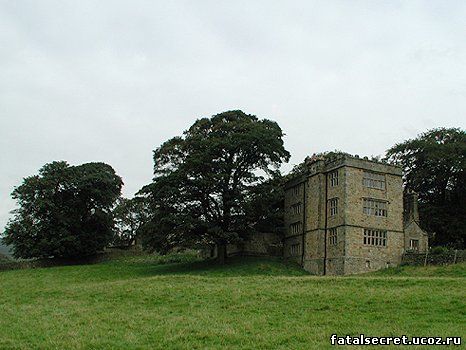
The lonely romaticism of the hall and the legends of its erstwhile occupants, the Eyre family, attracted many writers - most famously Charlotte Bronte - through whom it became immortalised as "Thornfield Hall" in Jane Eyre. The Elizabethan tower house, built of coursed rubble gritstone, was built for William Jessop in the early 1590s.
During Victorian times North Lees Hall was popularly believed to be the hereditary seat of the Eyre family, a clan who provided a plentiful supply of romantic material for local historians. Because the Eyres had been living at the hall since the middle of the eighteenth century, it is not difficul to see why Victorian writers had become confused about their tenure there. Hence in 1868, William Bemrose in The Reliquary Quarterly writes: 'North Lees was built by Robert Eyre, who it is said had eleven sons, for each of whom he built a house, he himself residing at the Highlows (Highlow Hall, on the further side of Hathersage)...From this house Mr. Eyre could see all the residences of his eleven sons and tradition says that on certain signals from the flag staff being given he could command the attendance of any or all of his sons as he required them.' (excerpted from the Vivat guidebook for North Lees Hall)
During Victorian times North Lees Hall was popularly believed to be the hereditary seat of the Eyre family, a clan who provided a plentiful supply of romantic material for local historians. Because the Eyres had been living at the hall since the middle of the eighteenth century, it is not difficul to see why Victorian writers had become confused about their tenure there. Hence in 1868, William Bemrose in The Reliquary Quarterly writes: 'North Lees was built by Robert Eyre, who it is said had eleven sons, for each of whom he built a house, he himself residing at the Highlows (Highlow Hall, on the further side of Hathersage)...From this house Mr. Eyre could see all the residences of his eleven sons and tradition says that on certain signals from the flag staff being given he could command the attendance of any or all of his sons as he required them.' (excerpted from the Vivat guidebook for North Lees Hall)
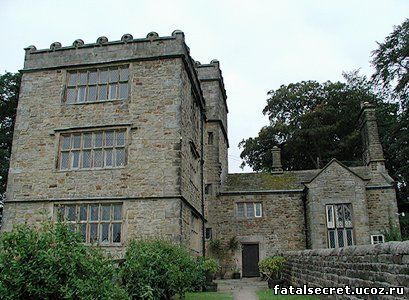

Two more views of the outside. North Lees is not elegant, but is typical of Elizabethan tower houses.
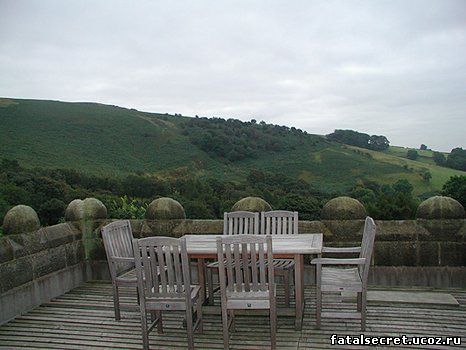
The roof top looks across the rolling Derbyshire Dales
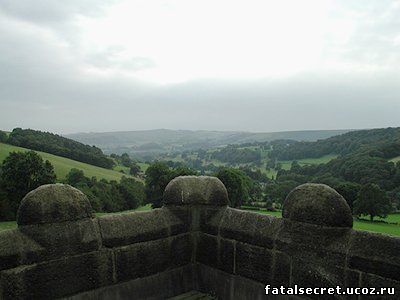
These are the battlements that Charlotte Bronte described in Jane Eyre when writing about Thornhill
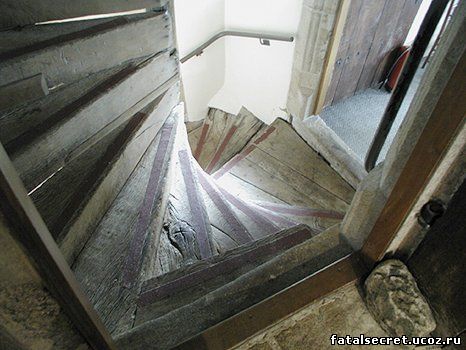

Access to the rooms are from a heavy wooden staircase. The treads are made of 6-8 inch slabs of elm, much worn and patched, but still sturdy. The doorway seen on the right of the first picture is the entrance to the grand living room, which is 25 feet on a side. This photo was taken from the doorway of the kitchen looking down.
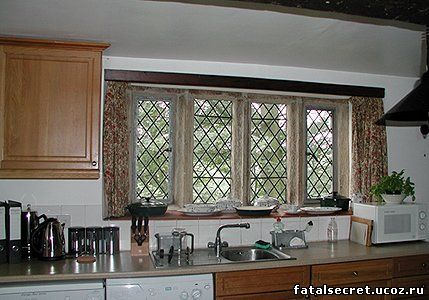
The kitchen is very modern and well stocked. The window looks out onto a magnificent chestnut tree, its boughs teeming with the frolics of tiny birds. There is a washing machine and a dryer (the white appliances under the counter to the left), all the cooking utensils you could want, blue and white china - everything but a maid! This is a great place to stay.
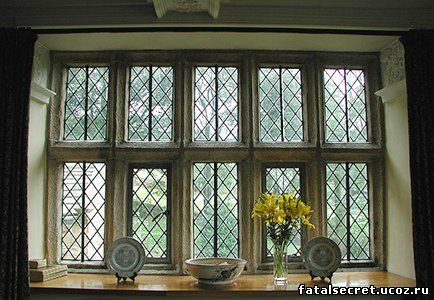
These magnificent mullioned and transomed windows are in each of the large rooms. The windows all afford wonderful views across the estate, and at night the lighted windows look like huge lanterns from the drive. There were two vases full of fragrant yellow lilies waiting for us.
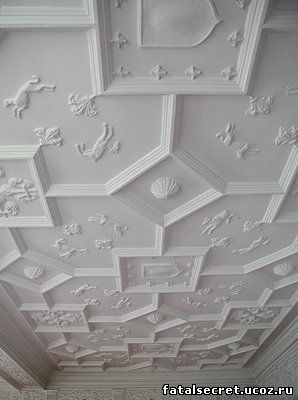
The ceiling in the living room has been restored to its original granduer. It is heavily patterned with crests and hunting motifs. The frieze below shows a "cubit arm erect grasping an oak branch acorned". In 1926 Jimmy Ashton of Manchester wrote to Ethel Eyres in Iowa, "It is many years since I saw the place, but everywhere there was gloom and desolation....within the venerable pile there are traces left, though they are fast disappearing, of the originality of tastes and skills which arose in the 15th century in adding beauty to a homestead. There are two ceilings that have been splendid specimens of the pasterer's art." It was very satisfying to have seen these ceilings in their restored state and to know how carefully this property has been renovated.

The main bedroom is quite large but comfortable and also accomodates a twin bed and couch.

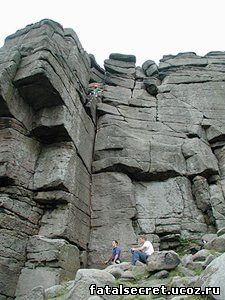
To the back of the estate is the Stanage Edge, a rocky scarp where there is a cave thought to be Robin Hood's lair. Today "The Edge" is a favorite climbing spot in the Peak District.

A view from the Edge across the North Lees Estate, the narrow country road winding through the patchwork of fields and forests.
Источник:
http://eyres.home.texas.net/NorthLees/NorthLees.htm
(Орфография источника сохранена)
http://eyres.home.texas.net/NorthLees/NorthLees.htm
(Орфография источника сохранена)



